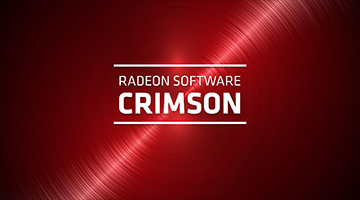 Using a value graphic card and dual value monitors, I should not beg for much. I know. But having my display torn and messed up regularly, only working with a couple of windows open, is too much the other way.
Using a value graphic card and dual value monitors, I should not beg for much. I know. But having my display torn and messed up regularly, only working with a couple of windows open, is too much the other way.
My specs are an AMD Radeon HD 5450 PCIe graphic card with 1GB of memory, and two Asus VE198S 19″ LED monitors (one connected to the graphics VGA port, and one to the HDMI using a VGA adapter). How to tackle the annoyance?
Ubuntu based platforms provide their own radeon graphics driver. Usually they work fine, but sometimes the proprietary AMD flgrx drivers do a better job. As in ‘a tad smoother, faster and more stable’. These drivers can be installed from the Ubuntu repositories too, but then you get an older version.
Recently AMD has overhauled their drivers for all platforms, upgrading the lot to ‘Crimson Edition‘ and I thought I’d give it a try. The AMD Installation Notes for Linux are near perfect, but let me summarize.
In short, installation on a Linux platform comes down to this:
- download the appropriate drivers from the AMD website
- fully uninstall the current drivers and reboot your computer
- login on a console, install the new drivers and reboot again
- check your settings in the Radeon Control Centre (formerly known as the Catalyst Control Centre)
Some more details.
1. You will need to download four packages for your particular Ubuntu version: fglrx-core-[version], the minimal video driver, fglrx-[version], the extended video driver, fglrx-dev-[version], the development libraries, and fglrx-amdcccle-[version], the Radeon Control Centre. It’s all deb-packages. Save them to a new directory in your home folder, and remember the path.
2. Full uninstall is most easy and safe from your package manager, e.g. Synaptic or Software Centre. However, in my case Synaptic did purge the fglrx drivers as intended, but automagically replaced them by another fglrx flavour. So I had to purge these as well. And reboot again.
3. Don’t be shocked after reboot: you probably land yourself at a console login, since, of course, there are no proper graphic drivers. Just cd to the directory where you saved your downloaded driver packages and install these manually:
$ sudo dpkg -i fglrx-core-[version] fglrx-[version] fglrx-dev-[version] fglrx-amdcccle-[version]
Check if all are installed properly:
$ sudo dpkg -l fglrx fglrx-core fglrx-dev fglrx-amdcccle
All packages should have ii as installation status. If so, reboot.
4. The Radeon Control Centre looks pretty much like Catalyst, but with a few more options. In my case the most important checks were:
- Under ‘Display Manager’ to ensure that for both monitors, on the ‘Adjustments’ tab, ‘Image Options’ was set to ‘Use graphics processor for scaling’.
- Under ‘Display Options’ to ensure that ‘Tear Free Desktop’ was enabled.
Things seem to work fine now, graphically speaking…
NOTE – Not all is fine, though. I cannot access a TTY by using the Ctrl+Alt+Fn keys. Not at the login screen and not from a running KDE workspace. I only need that in emergencies, but then it needs to work. Seems to be a graphic driver issue… See this post.